This article will give you “19 Best Practices for Bathing Different Dog Breeds”. Discover the secrets to a successful bathing routine tailored to your dog’s unique breed and needs. In this comprehensive guide, we’ll providing valuable insights and tips to make bath time easier, safer, and more enjoyable.
From tiny Chihuahuas to majestic Great Danes, understanding their specific requirements will help maintain their coat health, manage skin conditions, and keep them looking their best.
Learn about appropriate bathing frequency, product choices, grooming techniques, and more. Join us on this informative journey to become a pro at pampering your furry friend and nurturing their overall well-being.
My Personal Experience
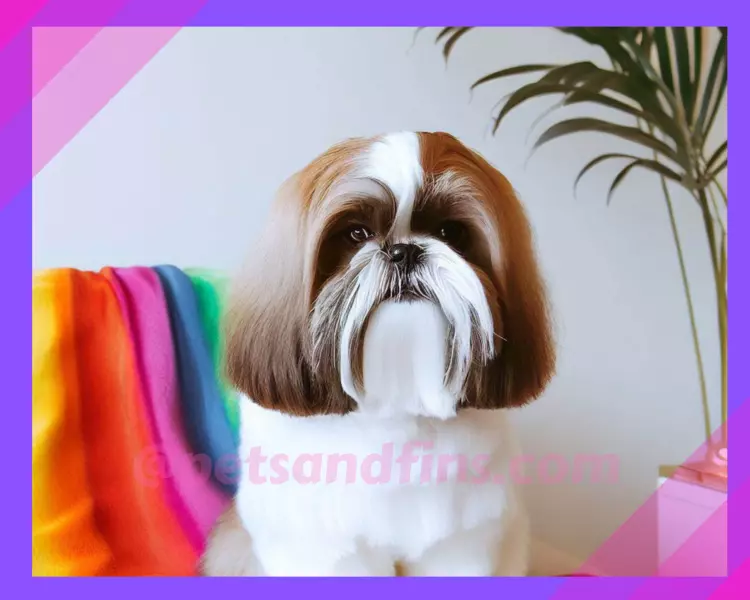
My Shih Tzu, Miko, is a precious little dog with a personality as big as her fluffy coat. One thing she absolutely hates is water on her face. Whenever I try to wash her face, she squirms and tries to run away. But I’ve found a way to make the experience enjoyable for both of us.
I always save washing Miko’s face for last when giving her a bath. This way, I can take my time and do it slowly so that she doesn’t feel overwhelmed or uncomfortable. As I gently wet her face with warm water, I talk to her in a soothing voice and give her plenty of treats.
To my surprise, Miko has started to enjoy having her face washed! She even leans into me and closes her eyes as if she’s getting a relaxing spa treatment. It’s moments like these that make me grateful for the bond between humans and animals.
19. Best Practices for Bathing Different Dog Breeds
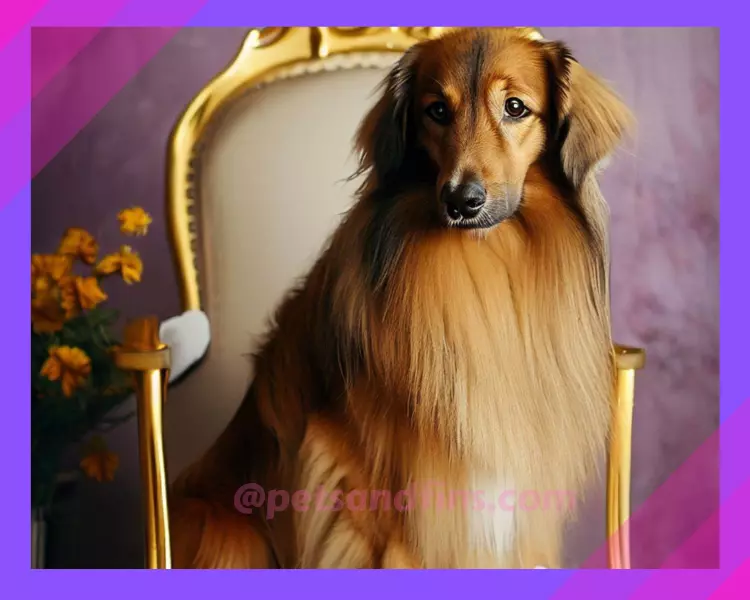
1. Know Your Dog
When it comes to bathing your beloved canine companion, it’s crucial to understand their individual preferences and needs. Every dog has a unique personality, and this extends to their bathing habits as well. Some dogs may enjoy the experience and eagerly jump into the bath, while others may feel anxious or fearful.
Observing your dog’s behavior and body language during previous bath times can provide valuable insights. Does your dog seem relaxed or tense? Do they enjoy the warm water or try to escape?
By paying attention to their reactions, you can tailor the bathing experience to suit their preferences, making it a more pleasant and comfortable experience for both of you. This understanding will help you establish a positive bathing routine that promotes a strong bond and a happy, clean pup.
2. Know Your Dog’s Coat
Understanding your dog’s coat type is essential for determining the best bathing practices. Some dogs have dry coats that lack natural oils, while others have naturally oily coats.
Dry-coated dogs, such as the Bichon Frise or the Maltese, require gentle shampoos that moisturize and nourish their skin and fur. These breeds often benefit from less frequent bathing to avoid stripping away their natural oils.
On the other hand, dogs with oily coats, like the Labrador Retriever or the Beagle, may require more frequent baths using mild, clarifying shampoos to prevent their coats from becoming greasy or smelly.
Regular bathing helps to maintain the balance of natural oils for both dry and oily-coated dogs, but it’s crucial to use the appropriate products and consider the specific needs of your furry friend. Consulting with a professional groomer or a veterinarian can provide further guidance on how to best care for your dog’s unique coat type.
3.Assess The Length Of The Coat
When it comes to bathing dogs with long hair, it’s important to consider their unique grooming needs. Long-haired breeds, such as the Yorkshire Terrier or the Collie, often require a different shampoo than their short-haired counterparts.
Long hair is more prone to tangling, matting, and trapping dirt, so using a shampoo specifically formulated for long coats can help maintain their beauty and manageability.
These shampoos typically contain ingredients that nourish and detangle the hair, making it easier to brush and preventing knots from forming. Additionally, long-haired dogs may benefit from using a conditioner to further soften and protect their luxurious locks.
Remember to thoroughly rinse out the shampoo and conditioner to prevent any residue that could lead to skin irritations. By selecting the right shampoo and following proper grooming techniques, you can ensure that your long-haired companion looks their best and enjoys a clean, healthy coat.
4.Assess The Color Of The Coat
The color of your dog’s coat can also impact the bathing practices you should follow. Dark-coated dogs, like the Black Labrador or the Doberman Pinscher, may require special attention during bathing to maintain the richness and shine of their fur.
Dark-colored coats can show water spots and residue more easily, so it’s important to use a high-quality shampoo specifically designed for dark coats. These shampoos often contain color-enhancing ingredients that help to maintain the vibrancy of the coat and prevent fading.
It’s also crucial to rinse your dog thoroughly to remove any traces of shampoo or conditioner that could dull their color. Conversely, light-colored dogs, such as the Maltese or the Bichon Frise, may be more prone to staining, especially around their eyes or paws.
In these cases, using a whitening shampoo or a specialized stain remover can help to keep their coat looking bright and clean. By considering the color of your dog’s coat and selecting the appropriate bathing products, you can ensure that their unique coloring is beautifully maintained and preserved.
5.Brush Before Bath
Brushing your dog’s coat before bath time is a valuable practice that helps promote a cleaner and healthier bathing experience. Prior to getting them wet, take a few minutes to gently brush your dog’s fur, removing any loose hair, tangles, or mats.
This pre-bath brushing not only helps to prevent fur from clumping together during the bath but also allows water and shampoo to reach the skin more effectively, ensuring a thorough cleaning. Additionally, brushing helps to distribute the natural oils throughout their coat, promoting a healthier and shinier appearance.
For dogs with long hair or dense coats, regular brushing before bathing becomes even more essential in preventing matting or tangling, which can be difficult to untangle when wet.
By incorporating brushing into your pre-bath routine, you can enhance the overall cleanliness and appearance of your dog’s coat, making bath time a more efficient and enjoyable experience for both you and your four-legged friend.
6.How Much Shampoo Does Your Dog Need
When it comes to bathing your furry friend, the size of your dog plays a role in determining the amount of shampoo you’ll need. Generally, larger dogs, such as the Great Dane or the Golden Retriever, require a larger quantity of shampoo compared to smaller breeds.
Their larger bodies and thicker coats necessitate more product to ensure thorough coverage. However, it’s important to avoid using excessive amounts of shampoo, as it can be challenging to rinse it all out completely.
Using too much shampoo can leave residue behind, which may cause skin irritation or discomfort for your canine companion. It’s best to follow the instructions on the shampoo bottle or consult with a professional groomer to determine the appropriate amount based on your dog’s size.
By using the right amount of shampoo, you can effectively cleanse your dog’s coat without wasting product or compromising their comfort.
7.Ear Protection
Protecting the ears of your dog during bath time is crucial to prevent water from entering and causing potential issues. There are several ways to ensure their ears stay dry and safe. One effective method is to gently place cotton balls or earplugs in the ear canal to create a barrier against water.
These should be inserted carefully, ensuring they are not pushed in too far. Another option is to use specially designed ear covers or caps that can be secured around the base of the ears, providing an extra layer of protection.
Additionally, you can use a damp cloth to carefully wipe around the ears, being cautious not to get water inside.
It’s important to note that some dogs, particularly those prone to ear infections or with existing ear conditions, may require extra attention. In such cases, it is recommended to consult with a veterinarian for specific guidance on protecting their ears during bathing.
By taking the necessary precautions to shield your dog’s ears, you can help prevent potential discomfort, infections, and other related issues.
8.Dilute The Shampoo
Dilute the shampoo unless the instructions say don’t dilute. Diluting the shampoo before applying it to your dog’s coat can be a helpful practice in most cases. It allows for better distribution of the product and helps prevent any potential concentration that might be too strong for your pet’s skin.
Dilution also helps ensure that the shampoo is evenly spread, making it easier to rinse off later. However, it’s important to note that not all shampoos are meant to be diluted. Some shampoos have specific instructions not to dilute them, as they are formulated for direct use.
These shampoos often have a higher concentration of active ingredients that may lose effectiveness when diluted. Always read and follow the instructions provided by the manufacturer to determine whether or not dilution is appropriate for the particular shampoo you’re using.
When in doubt, consult with a professional groomer or your veterinarian for guidance on the best dilution practices for your dog’s bathing routine.
9.Shampoo Twice
Shampooing twice in one bath can be a beneficial practice, especially for dogs with particularly dirty or oily coats. The first round of shampooing helps to break down and lift away dirt, grime, and excess oils from your dog’s coat. By thoroughly rinsing off the first shampoo, you can remove these impurities from their fur.
However, for dogs with heavily soiled or oily coats, a single shampooing may not be enough to achieve optimal cleanliness. In such cases, a second round of shampooing can provide deeper cleansing and ensure that all residues are eliminated. It’s important to use a gentle, dog-specific shampoo during both rounds to avoid stripping their coat of natural oils excessively.
Additionally, be sure to rinse the coat thoroughly after each shampoo to remove any remaining product. While double shampooing can be beneficial for certain dogs, it’s essential to observe your dog’s reaction and skin condition.
If your dog has sensitive skin or shows signs of dryness or irritation, it may be best to consult with a veterinarian before implementing this practice.
10. Wash The Face Slowly And Carefully
Washing a dog’s face requires special attention and a gentle touch. It’s important to approach this task slowly and carefully to ensure their comfort and safety. Begin by wetting a soft cloth or sponge with lukewarm water, making sure it’s not too hot or cold.
Gently wipe the dog’s face, starting from the forehead and working your way down, being cautious around the eyes, nose, and mouth. Use a mild dog-specific facial cleanser or a small amount of diluted shampoo specifically formulated for the face, avoiding contact with the eyes.
Take extra care to rinse thoroughly, ensuring no residue remains. Pat the face dry with a soft towel, being gentle to avoid any discomfort. If your dog is particularly sensitive or anxious, consider using a tearless shampoo or seeking assistance from a professional groomer or veterinarian.
By washing the dog’s face slowly and carefully, you can maintain their hygiene without causing any unnecessary stress or discomfort.
11.Wash The Face Last
Washing the dog’s face last during the bathing process is a recommended best practice. By leaving the face for the end, you can minimize the chances of water, shampoo, or any other products getting into your dog’s eyes, ears, or mouth.
This approach allows you to focus on thoroughly cleaning the rest of their body first, ensuring that any dirt, debris, or excess hair is removed. Once you reach the face, you can give it your undivided attention. Use a soft cloth or sponge and a gentle, dog-friendly facial cleanser to clean around their eyes, nose, and mouth.
Take extra care around sensitive areas,and be sure to rinse thoroughly. By washing the dog’s face last, you prioritize their comfort and reduce the risk of any discomfort or irritation. Remember, always proceed at your dog’s pace, using patience and gentleness throughout the entire bathing process.
12. Re-Rinse If You Are Not Sure
One of the best practices when bathing your dog, regardless of their breed, is to always err on the side of caution and re-rinse if you’re not sure whether you’ve thoroughly rinsed off all the shampoo and conditioner. Leaving any residue behind can lead to skin irritations, itching, or even allergies for your furry friend.
It’s better to take a few extra minutes to double-check and ensure that your dog’s coat is completely free from any product. This is especially important in areas where their fur is thicker or hard to reach, such as under their belly or around their ears.
By re-rinsing, you can have peace of mind knowing that your dog’s skin and coat are clean, fresh, and free from any potential irritants. So, when in doubt, give them an extra rinse to maintain their overall comfort and well-being.
13.When To Use A Separate Conditioner
When to use a separate conditioner? The need for a separate conditioner during dog bathing depends on various factors, such as the length and texture of their coat. For dogs with long hair, using a separate conditioner can work wonders in keeping their locks soft, manageable, and tangle-free.
Long-haired breeds, like the Shih Tzu or the Afghan Hound, often benefit from the extra moisture and nourishment provided by conditioners specifically formulated for their needs. These conditioners help to detangle the hair, reduce frizz, and promote a healthy shine.
On the other hand, dogs with short coats may find that shampoos with built-in conditioners are sufficient to maintain their coat’s health and appearance. Breeds like the Boxer or the Dalmatian often have less need for additional conditioning, as their shorter hair is naturally more manageable.
However, if your short-haired dog has specific skin or coat concerns, a separate conditioner tailored to their needs may be beneficial. Assessing your dog’s coat length and individual requirements will help you determine whether a separate conditioner is necessary to enhance their bathing routine and ensure their coat stays in optimal condition.
14. Drying
Drying your dog after a bath is an essential step that should never be skipped. Leaving your dog’s coat wet can lead to various issues, such as skin irritation, fungal or bacterial growth, and discomfort. Once you have finished bathing your dog, use a clean, absorbent towel to gently and thoroughly dry their coat.
Start by patting them down to remove excess water, and then proceed to gently rub the towel over their body, including their legs, chest, and belly. It’s important to pay extra attention to areas where moisture tends to get trapped, such as the ears and between the toes.
If you prefer, you can also use a blow dryer on a low heat setting, ensuring it’s kept at a safe distance from their skin. Remember to use the lowest heat setting and continually move the dryer to avoid overheating any specific area.
By ensuring your dog is thoroughly dried after their bath, you not only keep them comfortable but also help prevent potential skin problems that can arise from excessive moisture.
15. Towel Dry
Towel drying your dog before using a blow dryer is a helpful practice that can significantly reduce the overall blow drying time. After bathing, gently pat your dog’s coat with a clean, absorbent towel to remove as much excess moisture as possible.
Start by pressing the towel against their body and then softly rubbing in a gentle, circular motion. By removing the majority of moisture with a towel, you can minimize the time your dog spends under the blowing heat of a dryer, which can be uncomfortable for some pets.
Once you’ve towel dried them, you can proceed to use a blow dryer on the lowest heat setting, keeping it at a safe distance from their skin to prevent any discomfort or burns.
Towel drying before blow drying not only reduces the time it takes for their coat to dry but also helps to preserve their natural oils, leaving their fur healthier and shining.
16. Brush The Dog
Brushing your dog after a bath is an important step in their grooming routine. While bathing helps to clean their coat, brushing helps to remove any tangles, mats, or loose hair that may have accumulated during the bathing process.
It also helps to distribute natural oils throughout the coat, promoting a healthier and shinier appearance.
By brushing your dog after a bath, you can prevent tangles from forming and keep their coat in optimal condition. Use a brush or comb suitable for your dog’s coat type and gently work through their fur, starting from the roots and moving towards the tips.
Pay special attention to areas prone to matting, such as behind the ears, under the armpits, and around the tail. Regular brushing after bath time not only helps maintain a well-groomed appearance but also provides an opportunity for bonding and grooming sessions that your dog will surely enjoy.
17. Don’t Push The Dog Bath For Lack Of Time
While it may be tempting to push through and rush a dog’s bath due to a lack of time, it’s important to prioritize their well-being and consider alternative options. If you find yourself in a time crunch, it’s best to opt for the services of a professional groomer.
Professional groomers are experienced in handling different dog breeds and can efficiently and safely bathe your furry friend. They have the necessary tools, expertise, and knowledge to ensure a thorough and stress-free grooming session.
Professional groomers can also provide additional services, such as nail trimming, ear cleaning, and coat trimming, that contribute to your dog’s overall hygiene and appearance. By entrusting your dog’s bath to a professional, you can have peace of mind knowing that your pet will receive the proper care and attention they deserve, even when time is limited.
Remember, the well-being and comfort of your dog should always be the top priority, and seeking professional help is a wise choice when time is a constraint.
18. Make Bath Time Fun
Making bath time a fun experience for your dog is key to building a positive association with grooming and maintaining their hygiene. There are several ways to make bath time enjoyable for your furry friend. Start by creating a calm and inviting environment in the bathing area, using non-slip mats or towels to ensure their safety.
Use toys or treats to entice them and make bath time feel like playtime. Consider playing soothing music or using aromatherapy scents to create a relaxing atmosphere. Gradually introduce them to the water, using a gentle stream at a lukewarm temperature.
Offer plenty of praise, gentle strokes, and reassuring words throughout the process. Engage in games or gentle splashing to make the experience more interactive and enjoyable. After the bath, reward them with treats, playtime, or cuddles.
By making bath time a positive and fun activity, you not only enhance their overall well-being but also strengthen the bond between you and your beloved pet.
19. Reward Time
Reward time is an important aspect of the bathing process for dogs of all breeds. After a successful bath, it’s crucial to reward your furry friend for their cooperation and good behavior. Positive reinforcement helps create a positive association with bath time and encourages a willingness to participate in future grooming sessions.
This reward can come in the form of verbal praise, gentle petting, or even a small treat. Take a few moments to show your appreciation and celebrate the completion of the bath. Not only does this reinforce good behavior, but it also strengthens the bond between you and your beloved pet.
Remember, each dog is unique, so tailor the reward to their preferences and what they find most motivating. By incorporating reward time into your bathing routine, you create a positive and enjoyable experience for both you and your furry companion.
Summary
In conclusion, practicing proper bathing techniques is essential for maintaining the cleanliness, health, and overall well-being of your beloved dog. By following these best practices, tailored to different dog breeds, you can ensure a safe, comfortable, and effective bathing experience.
Remember to know your dog’s preferences and individual needs, including their coat type, size, and specific requirements. Take the time to assess their coat length, color, and any additional considerations, such as ear protection or the use of separate conditioners.
Dilute shampoos unless instructed otherwise, and consider washing the face last while being mindful of their sensitive areas. Towel drying before blow drying and rewarding your dog for their cooperation are crucial steps in the process.
Lastly, never compromise on drying your dog thoroughly and, if time is limited, seek the assistance of a professional groomer. By implementing these best practices, bath time can become an enjoyable and bonding experience for both you and your furry companion.
How To Bathe Your Dog Like A Groomer
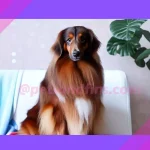
Bathing your dog like a groomer requires attention to detail and following specific steps to ensure a professional-level clean. Start by preparing the bathing area with the necessary supplies, such as shampoo, conditioner (if applicable), towels, and a brush or comb.
Groomers often recommend brushing your dog’s coat before the bath to remove any tangles or mats. Next, wet your dog thoroughly with lukewarm water, avoiding the head area for now.
Apply a dog-specific shampoo, lathering it gently and massaging it into their coat. Be thorough but gentle, paying attention to hard-to-reach areas like the underbelly and paws.
Rinse your dog completely, ensuring no shampoo residue is left behind. If needed, apply a conditioner, especially for dogs with long or coarse hair, and rinse it off thoroughly.
After the bath, towel dry your dog, removing as much moisture as possible. If you choose to use a blow dryer, set it on low heat and keep it at a safe distance from your dog’s skin.
Finally, brush your dog’s coat once more to remove any remaining tangles or loose hair. By following these steps and paying attention to the details, you can achieve a grooming-like bath for your beloved pet.
How To Clean Dog Without Bath
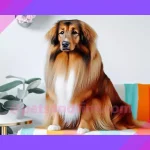
Cleaning your dog without a traditional bath is a practical alternative for times when a full bath may not be possible or necessary. There are several options to keep your dog fresh and clean between baths.
One method is to use dog-friendly wipes or wet towels specifically designed for quick clean-ups. Gently wipe your dog’s coat, paying attention to areas prone to odors or dirt accumulation, such as the paws, underbelly, and face.
Another option is dry shampoo, which comes in powder or spray form and helps absorb excess oils and odors from your dog’s coat. Apply the dry shampoo and brush it through their fur to distribute it evenly.
Regular brushing also plays a crucial role in keeping your dog clean. Brushing not only removes loose hair but also helps distribute natural oils, keeping the coat healthier and minimizing odors.
Additionally, you can spot clean specific areas using a damp cloth or sponge, particularly if your dog has gotten into something messy. Remember to choose gentle, dog-safe cleaning products and avoid using human products that may irritate their skin.
By utilizing these methods, you can effectively clean your dog without a full bath, keeping them fresh and comfortable between grooming sessions.
22 Common Mistakes to Avoid In Relation To Bathing Your Dog. (petsandfins.com)
How To Wash A Dog Step-By-Step
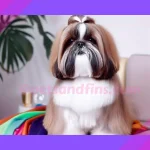
Washing your dog step-by-step ensures a thorough and effective bath while keeping them comfortable and safe. Here’s a guide to help you wash your dog like a pro:
Prepare the bathing area: Gather all necessary supplies such as dog-specific shampoo, conditioner (if applicable), towels, and a brush. Place a non-slip mat in the tub or use a suitable bathing container.
Brush your dog’s coat: Start by brushing your dog’s coat to remove any tangles, mats, or loose hair. This step helps prevent further tangling during the bath and ensures a cleaner result.
Get your dog wet: Use lukewarm water to wet your dog’s entire body, starting from the neck down. Avoid wetting their head and face at this stage to prevent water from entering their ears or eyes.
Apply shampoo: Apply a small amount of dog-specific shampoo into your hands and gently massage it into your dog’s coat. Ensure to cover all areas, including their underbelly, paws, and tail. Use a shampoo specifically formulated for your dog’s needs, such as one for sensitive skin or specific coat types.
Rinse thoroughly: Rinse your dog’s coat thoroughly, ensuring no shampoo residue remains. Use your hands or a cup to pour water over their body, starting from the neck and working your way down. Make sure to remove all shampoo from their coat.
Apply conditioner (if necessary): If your dog’s coat requires conditioning, apply a small amount of dog-specific conditioner, focusing on the areas that need extra attention. Massage it gently into their coat and let it sit for the recommended time mentioned on the product label. Rinse thoroughly afterward.
Dry your dog: After rinsing, gently squeeze out excess water from your dog’s coat. Wrap them in a clean, absorbent towel and pat them dry. For long-haired dogs, you may need to use multiple towels. Avoid vigorous rubbing, as it can cause tangles or matting.
Optional blow-drying: If your dog is comfortable with it, you can use a blow dryer on the lowest heat setting. Keep the dryer at a safe distance to prevent overheating. Use your hands to fluff and separate the hair while drying.
Brush their coat: Once your dog is mostly dry, use a brush or comb suitable for their coat type to remove any remaining tangles or loose hair. This step helps maintain their coat’s health and appearance.
Reward and praise: Finally, praise and reward your dog for their good behavior throughout the bath. Offer treats, playtime, or affection to reinforce positive associations with the bathing experience.
By following these step-by-step instructions, you can give your dog a thorough and enjoyable bath, keeping their coat clean and their overall well-being in check.
Dog Bath Hacks

Dog bath hacks can make the bathing process more efficient, enjoyable, and stress-free for both you and your furry friend. Here are some useful dog bath hacks to consider:
Use a rubber mat or towel at the bottom of the tub to provide your dog with a secure and slip-resistant surface.
Place a cotton ball in each ear to prevent water from entering and causing potential ear infections.
To prevent shampoo or water from getting into your dog’s eyes, use a tearless shampoo or create a makeshift visor using a small towel or cloth.
If your dog dislikes the sound or sensation of running water, try using a handheld showerhead or a pitcher for a gentler water flow.
Use a handheld sprayer attachment or a detachable showerhead for better control and easier rinsing.
Freeze a Kong toy filled with peanut butter or a dog-friendly treat and give it to your dog during the bath to keep them occupied and distracted.
Place a non-slip mat or towel on the edge of the tub to provide your dog with a comfortable spot to stand or sit on while being bathed.
If your dog has a long coat, use a hair clip or elastic band to secure the hair away from their face and eyes during the bath.
Keep treats or small rewards nearby to reinforce positive behavior and encourage cooperation throughout the bath.
If your dog has a strong aversion to baths, try using aromatherapy by placing a few drops of lavender or chamomile essential oil in the bathing area to create a calming environment.
Remember, every dog is different, so it’s important to consider their specific needs and preferences when implementing these dog bath hacks. The goal is to make bath time more enjoyable and stress-free, promoting a positive bathing experience for both you and your furry companion.
I Bathe My Dog Everyday

Bathing your dog every day may not be a wise practice. While it’s important to maintain your dog’s cleanliness and hygiene, excessive bathing can have adverse effects on their skin and coat.
Dogs have natural oils on their skin that help keep their coat healthy and moisturized. Frequent bathing can strip away these essential oils, leading to dryness, irritation, and potential skin problems.
Additionally, over-bathing can disrupt the balance of the skin’s natural flora, making dogs more susceptible to allergies and infections. Instead, it’s generally recommended to bathe your dog every few weeks or as needed, depending on their breed, activity level, and specific circumstances.
Regular brushing, wiping their paws after walks, and spot cleaning can help keep them clean between baths. If your dog has a specific condition or requires more frequent bathing due to medical reasons, it’s best to consult with a veterinarian or professional groomer to establish an appropriate bathing schedule.
Remember, maintaining a proper balance in your dog’s grooming routine is essential for their overall health and well-being.
References
American Kennel Club. (n.d.). How Often Should You Bathe Your Dog? Retrieved from https://www.akc.org/expert-advice/health/how-often-should-you-bathe-your-dog/
PetMD. (n.d.). 5 Tips for Bathing Your Short-Haired Dog. Retrieved from https://www.petmd.com/dog/grooming/5-tips-bathing-your-short-haired-dog
VCA Hospitals. (n.d.). Brachycephalic Airway Syndrome in Dogs. Retrieved from https://vcahospitals.com/know-your-pet/brachycephalic-airway-syndrome-in-dogs

